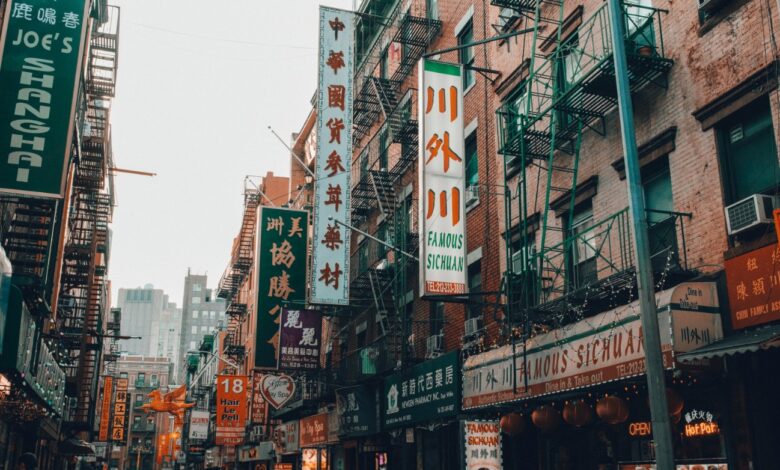Chinatown Hawker Leftovers Consumption: All the Information You Need

Chinatown is a culinary paradise, brimming with vibrant flavors and mouthwatering dishes. Yet, amidst the hustle and bustle of hawker stalls, there’s an often-overlooked treasure: leftovers. Yes, those delicious morsels that end up uneaten can be more than just food waste. They hold potential for environmental sustainability, economic benefits for local vendors, and community bonding experiences. Dive into the world of Chinatown hawker leftovers consumption to discover how these leftover delights can transform both lives and landscapes!
Chinatown Hawker Leftovers Consumption: All the Information You Need
Chinatown hawker leftovers consumption is a growing trend that highlights the importance of reducing food waste while savoring delicious cuisine. Many vendors are embracing this practice by offering leftover dishes at discounted prices, making it accessible for everyone to enjoy.
This initiative not only helps feed those in need but also fosters community spirit. Diners can discover new flavors and engage with local culture, all while contributing to a more sustainable food ecosystem. It’s about enjoying great food without guilt!
Latest Posts
Stay updated with our latest posts that dive deep into the vibrant world of Chinatown hawker leftovers consumption. Each article offers fresh insights, innovative practices, and community stories to enrich your understanding.
From exploring culinary delights to discussing environmental impacts, there’s something for everyone. Join us as we unravel the layers of this fascinating topic, connecting food lovers and advocates alike through shared knowledge and experiences in the bustling heart of Chinatown.
Understanding Chinatown Hawker Leftovers Consumption
Chinatown hawker leftovers consumption has become a significant practice among food enthusiasts and locals. It revolves around the idea of reducing food waste while enjoying delicious meals at a lower cost. Vendors often have surplus dishes at the end of their business hours, presenting an opportunity for customers to savor authentic cuisine without breaking the bank.
This movement not only helps in minimizing waste but also fosters community connections. Sharing leftover food strengthens social bonds, creating an atmosphere where everyone can enjoy good eats together.
Environmental Impact of Chinatown Hawker Leftovers Consumption
Chinatown hawker leftovers consumption significantly reduces food waste, which is a growing concern worldwide. By repurposing surplus meals, communities can cut down on the environmental footprint associated with food disposal. This practice promotes sustainability and encourages mindful eating habits.
Moreover, minimizing waste helps conserve resources such as water and energy that are typically used in food production. By embracing this culture of leftovers, we not only support local vendors but also contribute positively to our planet’s health and well-being.
Economic Advantages for Vendors and Communities
Chinatown hawker leftovers consumption presents significant economic advantages for both vendors and communities. By reducing food waste, vendors can increase their profit margins. Selling leftover meals at discounted prices attracts customers while minimizing loss.
Communities benefit as well, with affordable meal options available to those in need. This practice fosters a sense of solidarity among residents, encouraging support for local businesses. Additionally, it promotes sustainable practices that contribute positively to the neighborhood’s economic landscape. Engaging in this cycle strengthens community bonds while supporting local entrepreneurship.
Best Practices for Safe Chinatown Hawker Leftovers Consumption
To ensure safe consumption of Chinatown hawker leftovers, always inspect food before eating. Look for signs of spoilage such as unusual smells or changes in texture. When possible, reheat leftovers to a steaming temperature to kill harmful bacteria.
Store any uneaten food promptly in airtight containers and refrigerate within two hours. Make sure to consume them within three days for optimal freshness. Practicing these habits can help you enjoy your favorite dishes while minimizing health risks associated with leftover consumption.
Community Engagement and Education
Community engagement is crucial in promoting Chinatown hawker leftovers consumption. Local initiatives can raise awareness about food waste and the benefits of sharing surplus meals. Workshops, events, and social media campaigns can connect vendors with residents.
Education plays a vital role in shaping attitudes towards this practice. By informing people about the environmental and economic advantages, communities become more supportive. Schools and community organizations can collaborate to create programs that emphasize sustainability, encouraging everyone to participate actively in reducing waste while enjoying delicious food.
Health and Regulatory Considerations
Health and regulatory considerations are crucial in ensuring safe consumption of Chinatown hawker leftovers. Vendors must adhere to food safety guidelines, which include proper storage and handling practices. This helps minimize the risk of foodborne illnesses.
Regulatory bodies play a vital role in monitoring these standards. Ensuring compliance protects both consumers and vendors alike, fostering trust within the community. Awareness of local regulations can lead to better practices, benefiting everyone involved in Chinatown hawker leftovers consumption.
Spotlight on Successful Models
Several cities have embraced successful models for Chinatown hawker leftovers consumption. In Singapore, initiatives like “Share Food” encourage patrons to donate surplus meals to those in need. This not only reduces waste but also fosters community spirit.
Similarly, Hong Kong’s “Food Angel” program collects excess food from vendors and redistributes it to local charities. These programs highlight the potential of collaboration between hawkers and organizations, driving both sustainability and social impact within vibrant communities.
Policy Recommendations to Expand Chinatown Hawker Leftovers Consumption
To expand Chinatown hawker leftovers consumption, policymakers should consider incentivizing food vendors with tax breaks or grants. This financial support can encourage more hawkers to participate in sustainable practices that minimize waste.
Additionally, implementing community-driven initiatives like “leftover exchange” programs can facilitate better distribution of excess food. By fostering partnerships between local businesses and non-profits, cities can create a seamless system for sharing unsold meals while engaging the community in meaningful ways.
Conclusion
The consumption of Chinatown hawker leftovers can reshape how we think about food waste. It offers a unique opportunity to savor diverse flavors while supporting local vendors and communities.
By embracing this practice, we not only reduce environmental impact but also promote sustainability in our eating habits. Engaging with the community around leftover consumption fosters a sense of connection and responsibility towards both food and culture. This approach brings together delicious experiences with meaningful action for a better future.
Post navigation
Navigating through a blog can feel like exploring a bustling street market. Each link is an enticing stall, offering something unique to discover. With just a click, you can find related posts that delve deeper into the fascinating world of Chinatown hawker leftovers consumption.
Make sure to explore these links for additional insights and tips. Whether you’re seeking recipes or community initiatives, there’s always more to learn. Dive in and let your curiosity guide your journey through this vibrant topic!
You Missed
Chinatown hawker leftovers consumption is more than just a trend; it’s a movement that brings communities together. It encourages sustainable practices and offers delicious food at an affordable price while minimizing waste. The growing awareness of environmental concerns has made this practice increasingly relevant.
The positive impact on local economies cannot be understated, as vendors benefit from reduced waste and increased sales opportunities. Community members also gain access to quality meals without breaking the bank.
As we engage with these concepts, it’s essential to remember the importance of education around safe practices and health regulations. By sharing successful models and advocating for supportive policies, we can elevate Chinatown hawker leftovers consumption to new heights.
Stay tuned for more insights on this vibrant topic in our upcoming posts! There’s always something new happening in the world of street food culture that you won’t want to miss.



